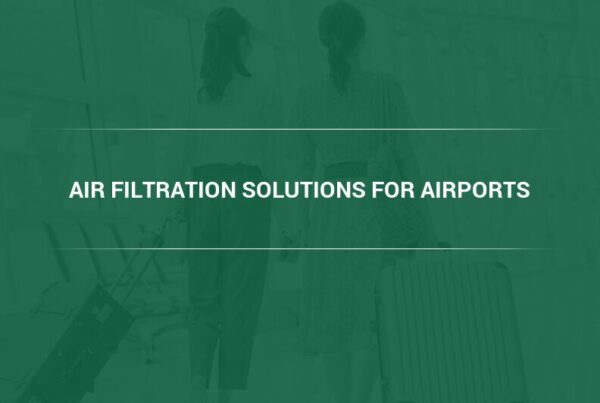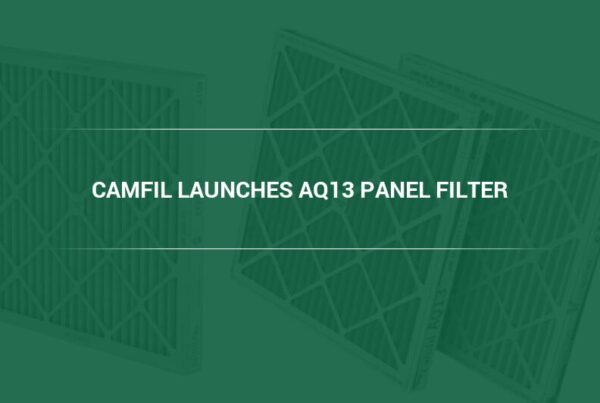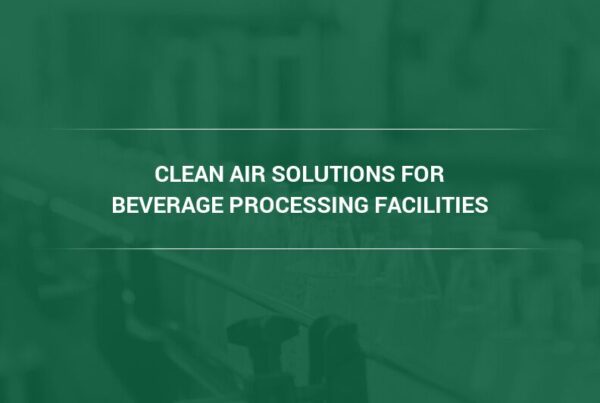People who work every day in a shared office space are all too familiar with what awaits them when they first enter the room. They are greeted by a mix of odors from furniture fabric, the carpet, office equipment, an air-freshener attached to the AC unit, and, of course, the people themselves. All of these smells can fill the air in an enclosed environment, which is why many companies have relied on filters to keep the air as pleasant as possible.

But are they addressing the issue properly?
According to a study conducted by researchers at Purdue University in Indiana, certain airborne pollutants (which is where these smells come from) can build up to dangerous levels in offices, so much so that they can affect worker health and productivity.
The research team studied an office for a month and found high levels of volatile organic compounds (VOCs) can be generated by people simply by being in an enclosed environment. VOC emissions associated with humans and human activity include breath and sweat, as well as clothing, cosmetics, hair products, and deodorant.
Challenges of Indoor Air Quality in Offices
According to researcher Brandon Boor, one issue creating poor office indoor air quality comes from inadequate ventilation. If an office space isn’t well ventilated, VOCs are unable to escape outside and accumulate indoors, affecting the health and productivity of employees as a result. The study found that people and their activities inside an enclosed space had a significant impact on air quality, even if the room was ventilated. More specifically, the researchers found that compounds carried by human breath lingered in the air long after people left the room.
To monitor air quality, the team installed thousands of sensors in an office inside Purdue University’s Living Labs, along with an instrument called The Nose, which was designed to track levels of ozone (O3), carbon dioxide (CO2), aerosols, and VOCs.
The study found that levels of compounds off-gassed by personal care products were highest in the morning, presumably when employees arrive at the office having just applied products like hairspray and deodorant. They also found that the more people there were in a room, the higher the concentration of VOCs in the air.
The study also found that levels of VOCs were up to 20 times higher indoors than outdoors and that proper ventilation was instrumental in exhausting these pollutants outside.
Why Addressing VOCs is Important for Office Building Occupants
Studies have associated VOCs with health issues ranging from minor conditions like eye strain, throat irritation, and colds, to something more serious, like cancer. For offices, the most common manifestations of prolonged VOC exposure include problems with concentrating and productivity loss. Whatever the case, offices can benefit from commercial air filters that remove VOCs and other airborne pollutants from enclosed environments.
According to Miriam Diamond, a professor in the earth sciences department at the University of Toronto, the lack of ventilation increases the risk of indoor air pollution.
Unfortunately, poor ventilation is a common problem in many offices.
“Many offices have poor air circulation these days, with windows that can’t even be opened in an attempt to be more energy-efficient,” explains Kevin Wood, Vice President of Sales and Marketing at Camfil USA. “Some offices and commercial premises have outdated ventilation systems that simply move unclean air from one part of the office to another. When outdoor air does enter the ventilation system, pollution from smoke, dust, and pollen will deposit on fans, coils, and ducts.”
Controlling ‘Sick Building Syndrome’ with Both High Efficiency Commercial Industrial Air Filters and Molecular Filters
“Sick building syndrome,” a condition caused by poor ventilation, is characterized by symptoms ranging from headache and stuffy nose to general discomfort. However, opening the windows to let stale indoor air out and fresh outdoor air inside can be impractical if the building is in an area with high levels of outdoor air pollution such as buildings near freeways, construction sites, or industrial zones.
“High efficiency air filters (MERV 13/13A or higher) are designed to capture and remove a higher ratio of particles from the airstream that are harmful to human health.” says Camfil’s Kevin Wood. “This is particularly important if higher ventilation rates are used to replace room air more frequently. VOCs are molecular in nature and are up to 10,000 times smaller than particles in the air. For that, you need to consider adding molecular filters, sometimes referred to as carbon filters, to the ventilation system. It may require retrofitting the system to install molecular filters as an integral part of the HVAC system. If that is not feasible, stand-alone air purification systems with molecular filters is a very cost effective solution.”
As today’s employees spend more time indoors than ever, it has never been more important to ensure that they’re breathing clean and safe air.
Things to Consider When Upgrading HVAC Filters or Adding Stand-Alone Air Purification Systems
When choosing to upgrade to high efficiency air filters or add air purifiers with molecular filters, it’s best to consult a qualified air filtration professional. High efficiency commercial air and molecular filters have operational requirements that may necessitate adjustments to your system. Avoid the temptation of installing cheap bargain filters in attempt to address the issue. . High quality filters are your solution to assist with providing cleaner indoor air and a wiser investment of your dollars. If a product is too good to be true, it most likely is.
For 50 years, Camfil USA has built commercial air filtration systems for commercial buildings and offices. Talk to our air filtration expert near your location today to learn more about our line of air filter solutions.
Canada study looks at the health impact of office IAQ
Related Video Are you Safe?



